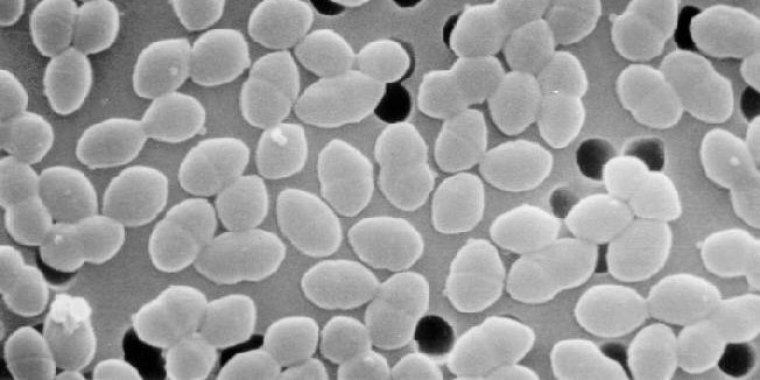| News / Science News |
Enterococci may have evolved antimicrobial resistance millions of years ago
Enterococci bacteria are the bane of hospitals, causing thousands of multidrug-resistant infections in patients each year. Now, researchers have traced evidence of the bacteria’s evolutionary history back 425 million years and theorize that the same traits that allow the bacteria to thrive in hospitals likely emerged when they were carried onto land in the guts of the world’s first terrestrial animals.

Enterococcus sp. bacteria. ![]()
Researchers at the Massachusetts Eye and Ear Infirmary, Harvard Medical School, and the Broad Institute of MIT and Harvard examined DNA from 24 species of enterococci, taken from the guts of a wide variety of animal and human hosts.
The team calculated the average rate of genetic change within enterococcal species and compared genes of existing enterococci to those of related, non-enterococci bacteria.
The analysis allowed the researchers to build an evolutionary timeline to estimate when key enterococci traits emerged. They then checked this timeline against the fossil record of terrestrial animal evolution.
All enterococci sampled were resistant to a common set of stresses--including antibiotics, disinfectants, drying and starvation--suggesting that the ancestors of all enterococci also shared these abilities. Enterococci appear to have developed these traits at around the same time that terrestrial animal life evolved.
The researchers theorize that the ancestors of all enterococci lived in the guts of prehistoric aquatic animals, and as their hosts left the sea around 425 million years ago, the bacteria were carried along. Simultaneously, they evolved the traits needed to survive introduction into the harsher environment of dry land.
The researchers note that while their model is difficult to prove, it does partially explain the ability of enterococci to survive in hospital environments: they have long been equipped to thrive in a wide range of challenging environments.
Having a better sense of what prompted the bacteria to evolve these abilities, the researchers say, could help control enterococci as the bacteria continue to circumvent hospital infection control methods. (NIH)
YOU MAY ALSO LIKE




